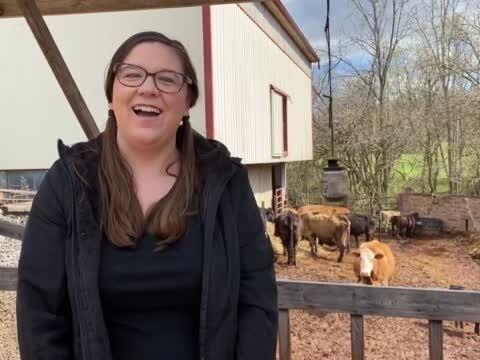meat.indah.link
From a contribution from the Pasture Prime Family Farm in Summerfield to Field to Feast, we have a Vietnamese recipe for Banh-Mi, which is a traditional Vietnamese submarine sandwich that includes meat and crunchy vegetables.
It calls for braised pork. If you are not familiar with the term ‘braising,’ it means ‘to cook meat or vegetables by browning in fat, then simmering in a small quantity of liquid in a covered container.’ In addition, you might have to find a couple of ingredients you may not have in your pantry.
A cautionary note here: when you “rub spice mixture into pork shoulder,” use rubber gloves… or be prepared to deal with “hot” hands for a few hours; and, don’t rub your eyes!
Jeanell Rogers’ Perfect Roast Beef from First Presbyterian Church of Apopka’s Treasures and Pleasures is always a big hit. Just choose a good roast to start with and use a meat thermometer to make sure the temperature is where you want it when it is done.
Here are Bonnie Werley’s Teriyaki Chicken Wings we found in First Presbyterian Church of Apopka’s Treasures and Pleasures cookbook.
We have a glazed, spiced carrots dish from Savannah Style for you.
Kyle Walkup’s Lemon Bread is from A Taste of Heaven by our friends at First Presbyterian of Punta Gorda. It is delicious.
Apopka Citizen Police Alumni Association’s Sharing Our Finest Cookbook shares with us Earl Coell’s Orange Fritters.
PASTURE PRIME FAMILY FARM,
SUMMERFIELD,
PULLED PORK BANH-MI
Recipe from Field to Feast
PORK:
2 tablespoons packed dark brown sugar
2 tablespoons Chinese five-spice powder
2 tablespoons coarse salt
1 tablespoon coarsely ground black pepper
5- to 7-pound boneless pork shoulder
BRAISING LIQUID:
1 cup chicken broth
1/4 cup fish sauce
1/4 cup lime juice
4 cloves garlic, smashed
2 shallots, thinly sliced
1 tablespoon sriracha (Asian hot chili sauce), or to taste
FOR SERVING:
Baguette sandwich rolls
Sliced fresh jalapenos
Fresh cilantro
Sliced cucumbers
PREPARE THE RUB AND MARINATE THE PORK:
Combine brown sugar, five-spice powder, salt, and pepper in small bowl.
If there is a very thick section of fat on the pork, slice away some of if, leaving a moderate layer.
Rub spice mixture into pork shoulder until well coated.
Place pork in a medium roasting pan. Cover with aluminum foil and refrigerate overnight.
BRAISE THE PORK:
Combine chicken broth, fish sauce, lime juice, garlic, shallots, and sriracha in a large measuring cup. Set aside.
Remove pork from refrigerator and set aside at room temperature for 30 minutes.
Preheat oven to 250 degrees Fahrenheit. Uncover pork and pour braising liquid into roasting pan. Re-cover with foil and roast until an instant-read thermometer reaches 180 degrees Fahrenheit, about six to eight hours, depending on thickness of shoulder. Remove pork from braising liquid. Pour liquid into a fat separator, or skim excess fat from surface of liquid and discard.
Shred pork with two forks. Pile meat inside a baguette. Top with jalapeno, cilantro, cucumbers, and a drizzle of braising liquid.
JEANELL ROGERS’
PERFECT ROAST BEEF
Recipe from 1990
Presbyterian Women
First Presbyterian Church of Apopka,
Treasures and Pleasures cookbook
If the roast chosen is good, well marbled with fat, and is from one of the choice cuts, the less you do to it, the better it will taste. Allow the meat to arrive at room temperature. Wipe and rub well with salt and pepper. Place the roast fat side up in an open pan without water. If roast needs fat, fasten extra suet over top with string or skewers. Place the meat in hot oven 500 degrees for 20 minutes to sear. Do NOT open oven door. Reduce heat to 300 degrees and roast for 16 minutes per pound for rare beef or 22 minutes per pound for well-done beef. Should you use a meat thermometer, it will read 180 degrees for a well-done roast.
BONNIE WERLEY’S
TERIYAKI CHICKEN WINGS
Recipe from 1990
Presbyterian Women
First Presbyterian Church of Apopka,
Treasures and Pleasures cookbook
1/3 cup lemon juice concentrate
1/4 cup catsup
1/4 cup soy sauce
1/4 cup vegetable oil
2 tablespoons brown sugar
1/4 teaspoon garlic powder
1/4 teaspoon pepper
3 pounds chicken wing drumettes or chicken wings cut at joints with wing tips removed
Combine all ingredients except chicken. Mix well. Place chicken in shallow baking dish or ZipLok bag. Pour marinade over. Seal and refrigerate overnight, turning occasionally. Preheat oven to 375 degrees. Arrange chicken on rack in shallow baking pan. Bake 40 to 45 minutes, basting occasionally until golden brown. Can be served as hors d’oeuvres.
OLDE PINK HOUSE
SPICED CARROTS WITH
MOCK HOLLANDAISE SAUCE
Recipe from Savannah Style,
a Cookbook by The Junior League of Savannah, Inc.
A specialty of The Pink House
Restaurant and Tavern –
12 large carrots
Salt to taste
Several cloves
Dash of cinnamon
Rind of one lemon
1/4 cup brown sugar
1/4 cup butter
1 tablespoon cornstarch
1 tablespoon water
Dash of sherry if desired
Peel amount of carrots desired to serve. (This recipe uses 12 large carrots.) Slice each carrot diagonally in three to four pieces. Place in saucepan and cover with water. Add salt, several cloves, a dash of cinnamon and the rind of a lemon. Bring to a boil and cook until carrots are tender. Pour off part of the water leaving enough for a glaze. Add 1/4 cup brown sugar, 1/4 cup butter for approximately 12 large carrots and enough cornstarch (1 tablespoon cornstarch and 1 tablespoon water) for a good glaze. Reheat until carrots are glazed thoroughly. Add a dash of sherry, if desired.
SAUCE:
2 cups mayonnaise
Juice of one lemon
1/4 cup sugar
1/4 cup prepared mustard
TOPPING:
Dried fruits and nuts (see below)
Parsley (see below)
Mix thoroughly and warm in a double boiler. Serve glazed carrots with sauce on top and sprinkle with diced coconut, raisins, sliced almonds and chopped parsley.
KYLE WALKUP’S LEMON BREAD
Recipe from First Presbyterian Church of Punta Gorda,
A Taste of Heaven
1 cup margarine
2 cups sugar
4 eggs
3 cups flour, sifted
1/2 teaspoon salt
1/2 teaspoon baking soda
1 cup buttermilk
Grated rind of one lemon
1 cup nuts, chopped
Lemon Syrup:
Juice of three lemons
1 cup confectioner’s sugar
Cream margarine and sugar. Add eggs one at a time and blend. Sift together: flour, salt, and soda. Add sifted ingredients to creamed mixture alternately with buttermilk, lemon rind and nuts. Pour into two greased loaf pans. Bake at 350 degrees for one hour.
While bread bakes, combine lemon juice and confectioner’s sugar. When bread is finished baking, pour lemon syrup over hot bread. Yield two loaves. It can be frozen.
EARL COELL’S ORANGE FRITTERS
Recipe from Apopka Citizen Police Alumni Association,
Sharing Our Finest Cookbook
1 cup flour
1 teaspoon sugar
1/2 teaspoon salt
2 eggs, beaten
2/3 cup milk
Mix flour, sugar and salt. Add milk slowly. Gradually add eggs. Peel and separate orange sections (remove seeds). Dip sections in batter and fry in deep 375 degree fat for 3 to 5 minutes or until golden brown. Drain and sprinkle with powdered sugar and serve.
The Link Lonk
April 30, 2021 at 03:45PM
https://ift.tt/3eBhMWw
A Vietnamese tradition, Banh-Mi, is a pulled pork sub sandwich | - Apopka Chief
https://ift.tt/2RsHZwT
Pork

 Mikah Wareham, a middle school student from Missouri, lives on her family’s cow-calf operation. She loves her horses, dogs and traveling with her father visiting cattle ranches and feedyards. Mikah wants
Mikah Wareham, a middle school student from Missouri, lives on her family’s cow-calf operation. She loves her horses, dogs and traveling with her father visiting cattle ranches and feedyards. Mikah wants




























